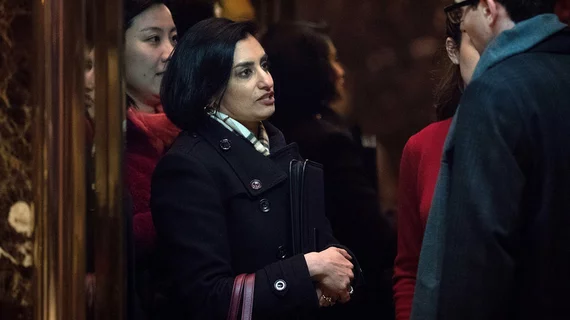CMS proposal to push shared savings risk could drive exodus of ACOs
Accountable care organizations (ACOs) may have to start taking on more financial risk going forward, if the Trump administration has anything to say about it.
CMS has proposed a new rule for the Medicare Shared Savings Program that would redesign participation options and ensure ACOs are taking risk for both financial gains and losses, the agency announced Thursday, Aug. 9. The agency expects the changes in the rule will results in $2.24 billion in federal savings over 10 years from decreases in claims costs and shared savings payments to ACOs.
“After six years of experience, the program must evolve to deliver value,” a CMS statement reads.
The proposal limits upside-only models to two years, a cut from the current six-year no-risk period. ACOs participating in the two-year upside-only risk model would also get 25 percent of shared savings, down from the current 50 percent allotment.
“After six years of experience, the time has come to put real ‘accountability’ in Accountable Care Organizations,” CMS Administrator Seema Verma, MPH, said in a statement. “Medicare cannot afford to support programs with weak incentives that do not deliver value. ACOs can be an important component of a system that increases the quality of care while decreasing costs; however, most Medicare ACOs do not currently face any financial consequences when costs go up, and this has to change.”
The rule comes after CMS has criticized ACOs that operate under an upside-only model, which allows organizations to share in cost savings but doesn’t push financial penalties for not meeting benchmarks.
As of January, 561 ACOs were participating in the shared savings program, serving more than 10.5 million Medicare fee-for-service beneficiaries. The vast majority–82 percent–have chosen a one-sided, share savings-only model that does not take downside risk. Participation in two-sided risk has continued to decline, though these ACOs have “shown significant savings” to Medicare and tend to perform better, the rule states.
The National Association of ACOS (NAACOS) called the rule “misguided,” predicting the changes will drive an “exodus” of ACOs from the shared savings program, which is voluntary.
“The administration’s proposed changes to the ACO program will halt transformation to a higher quality, more affordable, patient-centered health care industry, stunting efforts to improve and coordinate care for millions of Medicare beneficiaries,” NAACOS President and CEO Clif Gaus said in a statement.
“It’s naïve to think that ACOs that aren’t ready can be forced to take on risk, given that the program is voluntary. The more likely outcome will be that many ACOs quit the program, divest their care coordination resources and return to payment models that emphasize volume over value.”
To move the program forward, CMS proposed retiring Track 1 and Track 2 models. Track 1 models are one-sided models that do not assume downside risk; Track 2 models are low-risk with some shared savings and repayments based on performance. The agency proposed keeping Track 3, which it would rebrand as the enhanced track, and a basic track model that includes a gradual shift to taking on risk.
Former CMS Administrator Andy Slavitt applauded the proposal.
"They are making the call that people in Track 1 need to move up or out," he told POLITICO. "This is a decision that keeps getting deferred every year because people say they aren't ready. But their view is Track 1 is often an excuse to pick up market share and raise prices, not reduce admissions. I have pushed the same direction."
It also includes new tools to support care coordination, new benchmarking, interoperable EHR technology and information sharing on opioid use.
Read the proposed rule here.

